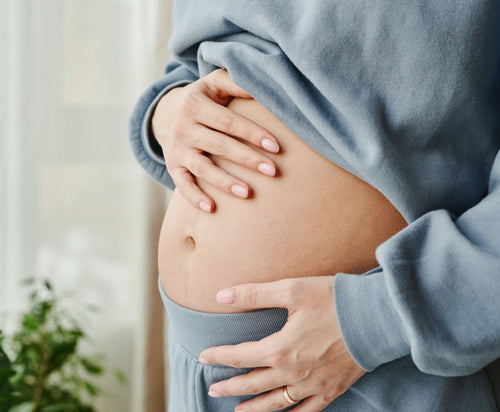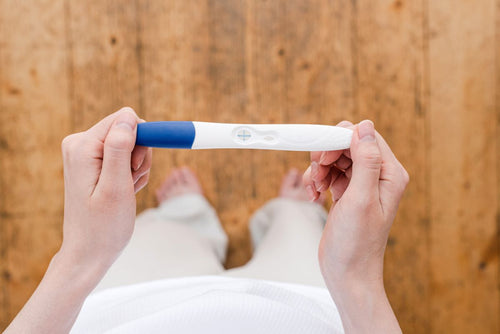- Where does hyperemesis gravidarum come from?
- The consequences of hyperemesis gravidarum
- What solutions to treat hyperemesis gravidarum?
- How to calm pregnancy nausea naturally?
Where does hyperemesis gravidarum come from?
Pregnancy nausea affects many pregnant women: 70% of them will experience more or less frequent episodes of nausea – sometimes accompanied by vomiting – during the first trimester. In question, the beta hormone HcG, the famous pregnancy hormone secreted by the body in large quantities from the start of gestation. This nausea – which contrary to general belief does not necessarily appear in the morning – is accentuated in particular by certain odors or meals that are too rich. There are solutions to relieve them such as herbal teas (for example Nausea Saver), food supplements based on ginger or medications prescribed by your doctor. If nausea and vomiting are among the little ailments that we would gladly do without, they nevertheless prevent you from leading an almost normal life and still enjoying your early pregnancy !


- Regular price
-
16,90 € - Regular price
-
- Sale price
-
16,90 €
Hyperemesis gravidarum – hyperemesis gravidarum in Latin – is a game changer: it is a severe form of nausea and vomiting during pregnancy, which will affect 1 to 2% of pregnant women (2). Perhaps you have heard about it in the media: Kate Middleton herself suffered from it during these three pregnancies and helped to highlight this pathology which remains relatively little known.
This pathology occurs between the 4th and 8th week of amenorrhea and in most cases subsides from the second trimester of pregnancy.
The exact causes of hyperemesis gravidarum are not known to date, even if certain factors seem to favor it. Among them, higher than average hormone levels (beta HcG but also estrogen), eating habits, sensory stimulation (such as light from screens) or a twin pregnancy.
Studies show that a history of migraines, vomiting during a previous pregnancy, age over 35 or even smoking promote the occurrence of this disease (3). The hereditary factor also seems to come into play: you are more at risk of suffering from it if your mother or someone else in your family was a victim themselves.

The consequences of hyperemesis gravidarum
Women with hyperemesis gravidarum often face the following problems:
- Weight loss , sometimes significant, linked to difficulty eating;
- Dehydration and ionic disorders (loss of salt, chlorine, potassium, etc.);
- Vitamin deficiency;
- A deterioration in oral health, caused by the acidity of vomit which attacks tooth enamel;
- Esophagitis, that is to say a burning of the esophagus caused by reflux.
To this is of course added a psychological dimension: physical and moral fatigue can set in, just like a depressive state and the impression of never seeing the end...
However, there is good news to keep in mind: baby, in utero, does not seem sensitive to this uncontrollable vomiting. However, the greater the weight loss, the greater the risk of intrauterine growth restriction . This is why future mothers suffering from hyperemesis gravidarum benefit from more in-depth medical monitoring, and are sometimes hospitalized to calm the vomiting.
What solutions to treat hyperemesis gravidarum?
The first measures call on common sense: firstly, you will have to change your way of eating. For example by splitting meals - eating in small quantities makes digestion easier - and by eliminating spicy foods, too fatty, too sweet, with strong odors which can trigger vomiting. The same goes for foods known to promote reflux , such as citrus fruits, tomatoes, coffee, tea or even chocolate. Hydrating yourself regularly and in sufficient quantities is also very important! Herbal teas can be a good alternative to water. Nausea Saver can be an interesting anti-nausea remedy. Its pleasant, delicately spicy taste and its ginger-based composition relieve nausea. It is possible to drink up to 3 cups per day.

Pregnant women who suffer from nausea are also advised to rest as much as possible because fatigue can increase vomiting. Quiet environments (without computers, smartphones, TV, etc.) are preferred. A work stoppage may be necessary while things get back to normal.
In the most severe cases – if the pregnant woman loses more than 5% of her original weight and is no longer able to eat and drink at all – hospitalization for a few days may be necessary. Intravenous rehydration will be implemented, with the administration of vitamins and certain medications.
Treatments with antiemetics to stop nausea will be used in addition, and in the most severe cases neuroleptics may be prescribed.
Good to know: Because hyperemesis gravidarum is a rare and little-known disease, pregnant women who suffer from it can feel isolated and misunderstood.
In any case, keep in mind that in most cases nausea and vomiting stop on their own around the 4th month, so you can (finally) calmly consider your pregnancy and focus all your attention on this part of it. growing cabbage! For a peaceful pregnancy and maternity, consider pampering your body while waiting for baby with our anti-stretch mark products and our care to recover after childbirth.


- Regular price
-
33,90 € - Regular price
-
- Sale price
-
33,90 €


- Regular price
-
28,90 € - Regular price
-
- Sale price
-
28,90 €


- Regular price
-
19,90 € - Regular price
-
- Sale price
-
19,90 €
(1) *McParlin C, O'Donnell A, Robson SC, . Treatments for Hyperhemesis Gravidarum and Nausea and Vomiting in Pregnancy: A Systematic Review. JAMA 2016;316:1392–401
(2) Figures on nausea and vomiting during pregnancy, document from the Pitié-Salpêtrière hospital group, 2017.




































